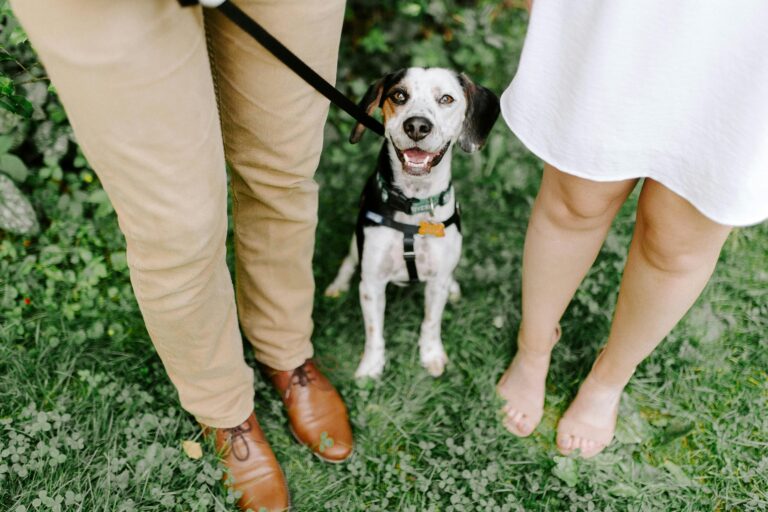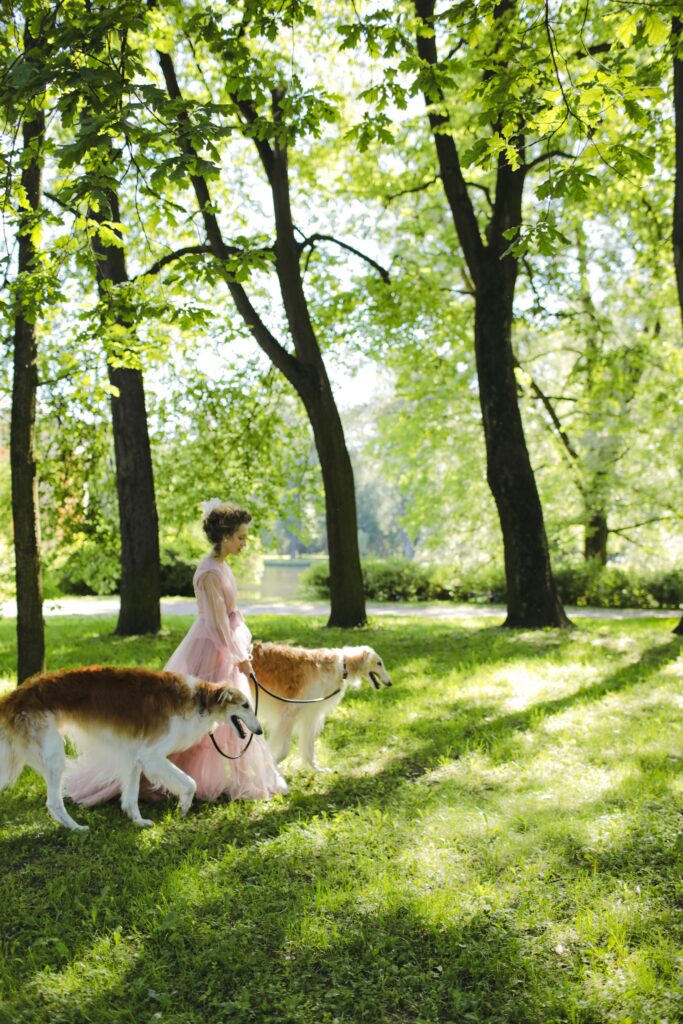As the weather cools down and fall hiking season approaches, you may be thinking about taking your dog along for more outdoor adventures. Whether it is a local trail, a pumpkin patch, or just long walks through the neighborhood, one skill makes or breaks the experience: leash walking.
There is nothing enjoyable about being dragged down a path by a dog lunging after every squirrel. Loose leash walking is not just a courtesy, it is a safety tool. And fall is the perfect time to finally master it.
In this post, we will break down what loose leash walking is, why it matters, and how to teach it effectively before your next autumn outing.
What Is Loose Leash Walking?
Loose leash walking means your dog walks calmly by your side without pulling on the leash. It does not require a rigid heel position, but it does require engagement, impulse control, and consistent leash pressure awareness.
Key differences between heel and loose leash walking:
- Heel: Dog’s shoulder stays aligned with your leg at all times
- Loose leash: Dog may explore a bit but keeps slack in the leash and checks in with you
Both skills are useful. For example, you might ask for “heel” when passing distractions, then release into “free walk” with a loose leash for sniffing.
For a deeper dive into both, see our post on Understanding Loose Leash Walking vs. Heel Training, which breaks down when and why to use each approach.
Why Pulling Is a Problem
Leash pulling is more than annoying. It sets the tone for the entire walk and teaches your dog that excitement and disobedience are acceptable in public. This becomes especially dangerous on trails, around children, or in crowded fall events.
Common issues caused by leash pulling include:
- Injuries to you or your dog
- Escaping a poorly-fitted harness
- Negative reactions from other people or dogs
- Missed training opportunities due to constant frustration
The earlier you address it, the better. But even older dogs with ingrained habits can learn new leash skills with the right structure.
Step-by-Step: How to Teach Loose Leash Walking
Here is a breakdown of how to start building strong leash habits now:
- Start in a Low-Distraction Environment
Begin training in your backyard, driveway, or quiet street before heading to busier areas. - Use the Right Equipment
Choose a standard 4 to 6 foot leash and avoid retractable leads. Tools like a training collar or head halter may help if introduced properly. - Reward Position and Focus
Every time your dog checks in with you or walks at your side, mark the behavior and reward with a treat or praise. - Stop Forward Movement for Pulling
If your dog pulls, stop walking. Wait for the leash to loosen, then resume. This teaches pulling gets them nowhere. - Practice Direction Changes
Frequent turns and unpredictable patterns keep your dog tuned into your movements and reduce leash pressure. - Keep Sessions Short and Focused
Train in 5 to 10 minute sessions. End on a good note and gradually add more time or distractions.
If you are not seeing progress or your dog pulls relentlessly, our Basic Obedience Program includes leash manners as a core skill and teaches engagement regardless of distractions.
Common Mistakes That Sabotage Leash Training
Avoid these frequent missteps:
- Letting your dog pull sometimes and correcting it other times
- Using retractable leashes that reward pulling with freedom
- Giving verbal commands without reinforcing physically
- Skipping structured walks and relying only on free play
Consistency is critical. If you allow pulling even once during a walk, it sends a confusing message.
Add Focus Games and Drills
Loose leash walking is more than mechanics. It is also about mental focus. Use short training games to improve your dog’s attention and connection:
- Name recognition with eye contact
- “Find it” games using scattered treats during walks
- Heel and release drills between structured walking and sniff breaks
Our post on serious games that improve skill development offers more ideas on how to turn training into meaningful play, which boosts retention and enthusiasm.
Gear Tips for Better Leash Control
There is no one-size-fits-all solution, but here are some effective gear choices for leash training:
- Flat collars: Good for already-trained dogs
- Martingale collars: Prevent slipping and provide slight correction
- Prong collars: Useful when used properly under professional guidance
- Head halters: Help redirect head movement without strain
- Front-clip harnesses: Reduce pulling but may encourage awkward gait
Whichever tool you choose, make sure it fits correctly and is paired with a consistent training plan.
Fall Adventures Are Better With Leash Control
Whether you are visiting an apple orchard, walking a nature trail, or attending a fall fair, your dog should enhance the experience, not make it more stressful. A dog that walks calmly beside you, even around distractions, is a pleasure to bring anywhere.
The American Kennel Club also emphasizes the importance of using proper tools and training to prevent leash reactivity and enhance safety during walks. Preparation truly pays off.
Quick Leash Walking Checklist
- Use a standard leash, not retractable
- Start in calm areas and build up distractions
- Reward check-ins and slack leash
- Stop forward movement when pulling
- Stay consistent on every walk
- Practice short sessions daily
Want a Dog That Walks Nicely Everywhere?
Loose leash walking does not just happen. It is trained, proofed, and maintained. If you are ready to enjoy calm, stress-free walks this fall, our Basic Obedience Program will teach your dog how to walk beside you with confidence and control.
Reach out through our contact page and let’s make your fall adventures the best ones yet.


